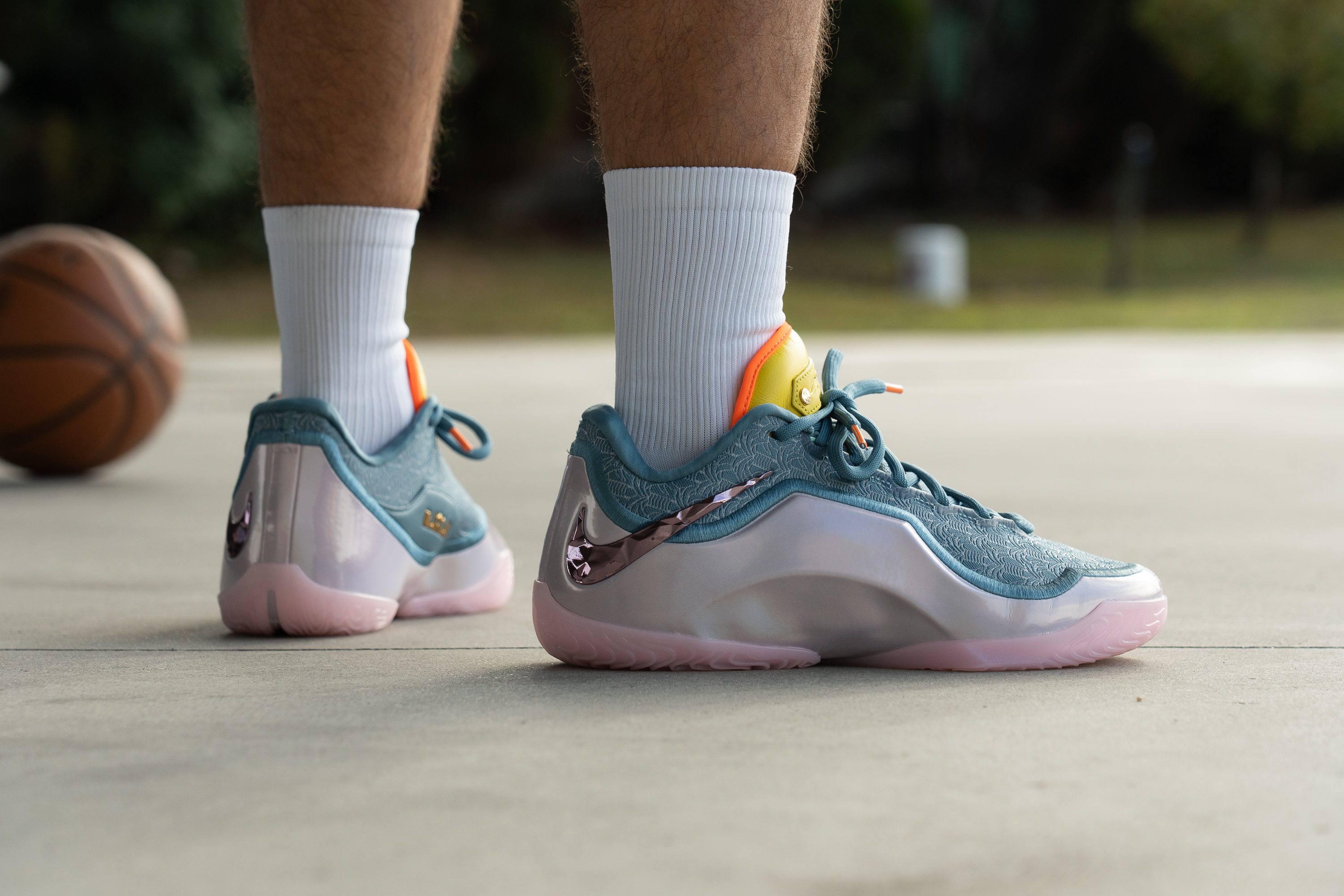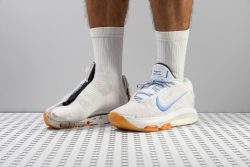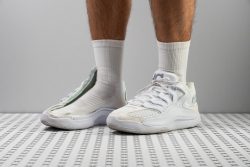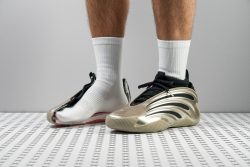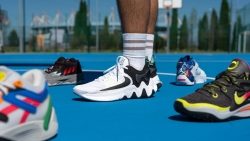6 Basketball Shoes With The Best Shock Absorption in 2025
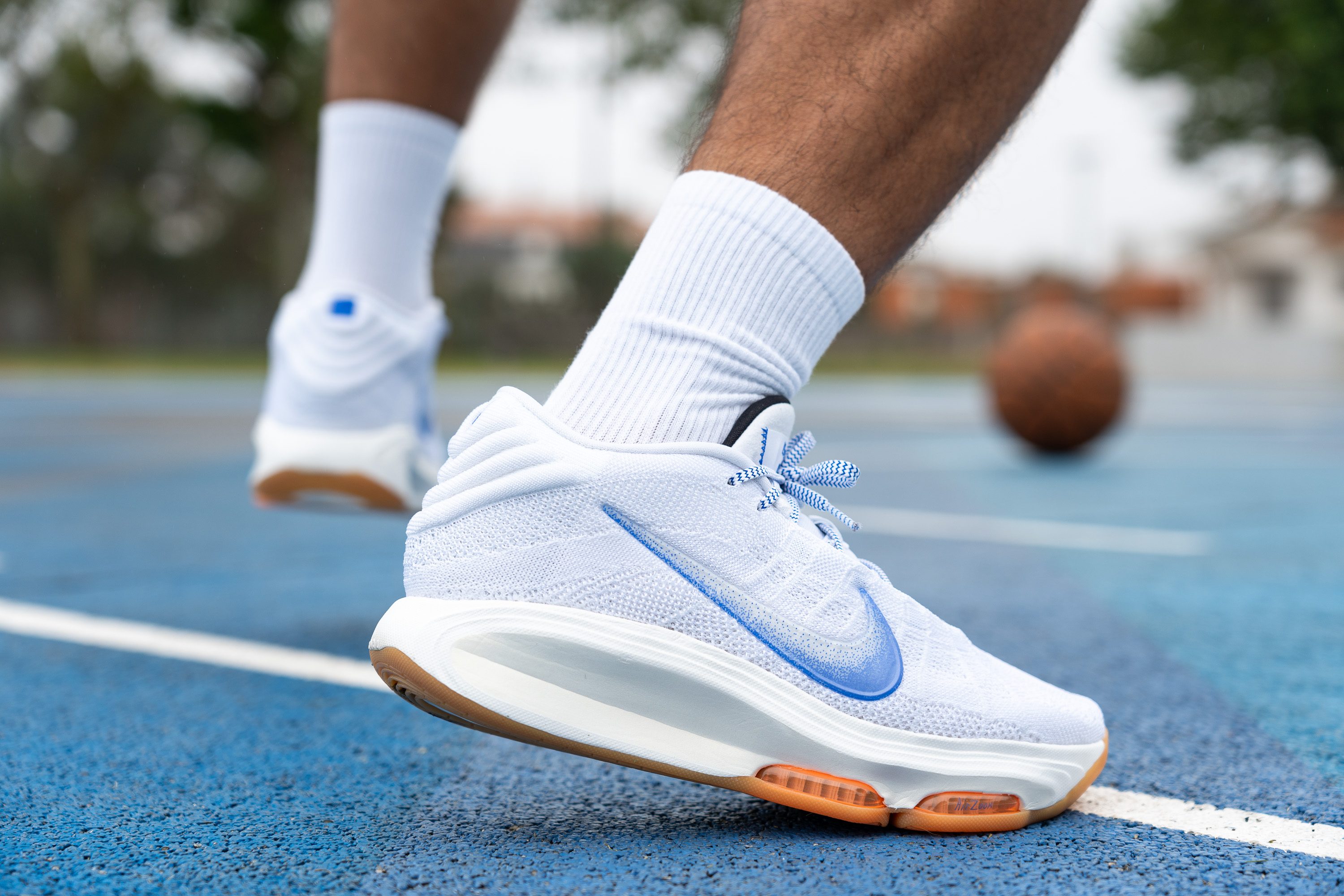
We buy shoes ourselves. We earn commissions when you buy through us, at no extra cost. Why trust us
Proper shock absorption is a fundamental reason to get a pair of basketball shoes. Along with good ankle support and reliable outsole traction, a solid amount of underfoot cushioning will not only get you through all four quarters comfortably but will also reduce fatigue and potential overuse injuries.
We take shoe cushioning seriously in our lab, measuring each shoe’s impact protection as precisely as possible so that you don’t have to just take the brands’ word for it.
Our top picks below include basketball shoes with the best shock absorption results.
How we test Basketball shoes with the shock absorption
First and foremost, all our tested shoes are sponsor-free as we purchase them with our own funds to avoid brand loyalty.
Once the shoe arrives, we test how it feels on the foot and on the court before taking it to the depths of our shoe lab.
And finally, our main testing procedure involves measuring 30+ different shoe parameters with the help of specialized tools and machines. One of the main tests in this pipeline is, of course, the shock absorption test.
We follow a trusted ASTM F1976 protocol to record the amount of impact absorbed by each basketball shoe, both in the heel and forefoot. For this, we drop an 8.5 kg mass from a 50 mm height and analyze the displacement curve. The first 25 drops mimic the break-in period and warm up the shoe, while the other 5 give us the end results.
Best basketball shoes with high shock absorption overall
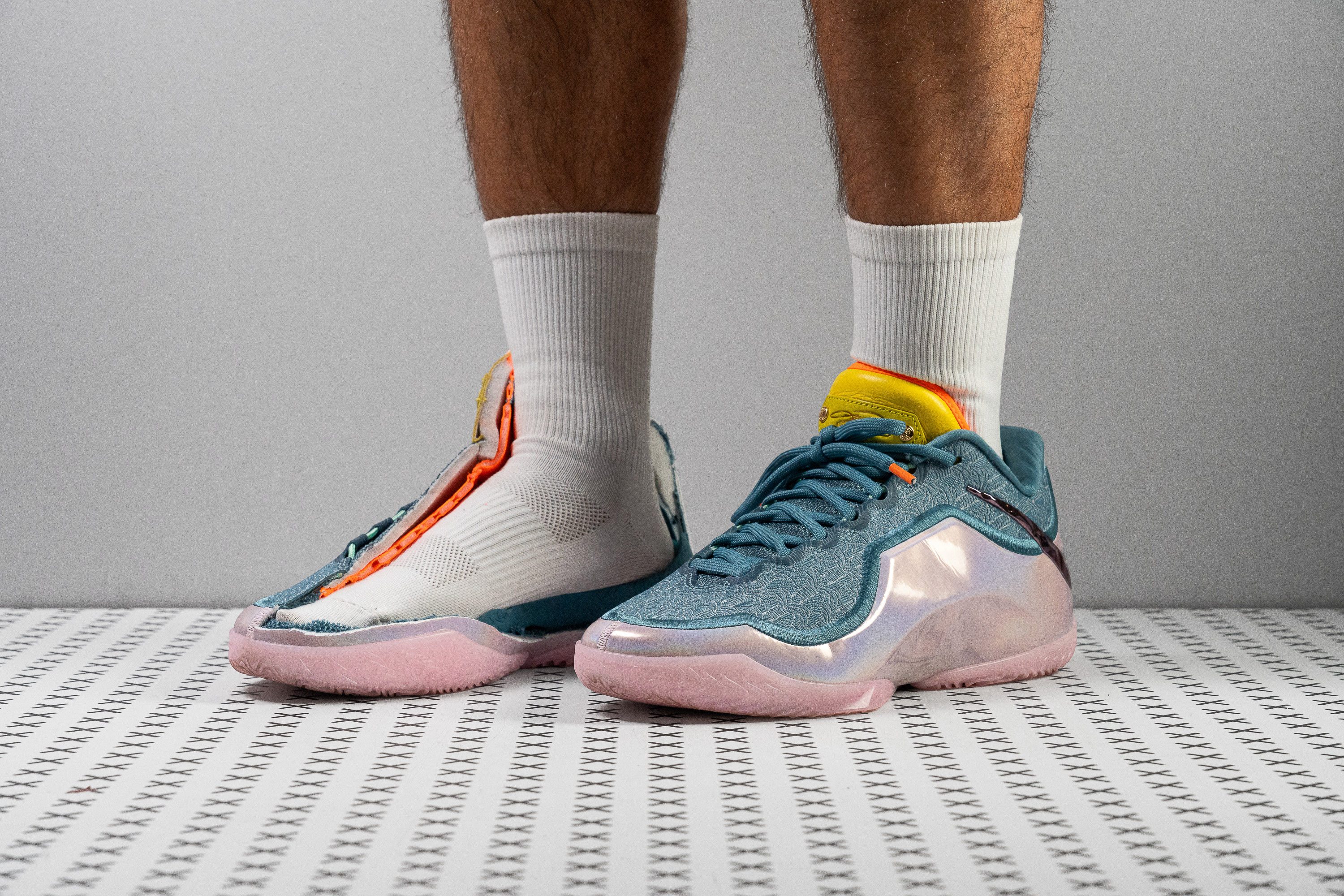












































What makes it the best?
Pros
- Outstanding energy return
- Excellent shock absorption in the heel
- Fantastic outsole traction
- Top-tier stability and ankle support
- Highly secure foot lockdown
- Exceptional durability
- Decent flexibility given the design
- True to size and width
Cons
- Still one of the heaviest
- Not for outdoor courts
- Extremely low toebox height
- Not breathable
- Rapid price increase
Best basketball shoes with high shock absorption and energy return
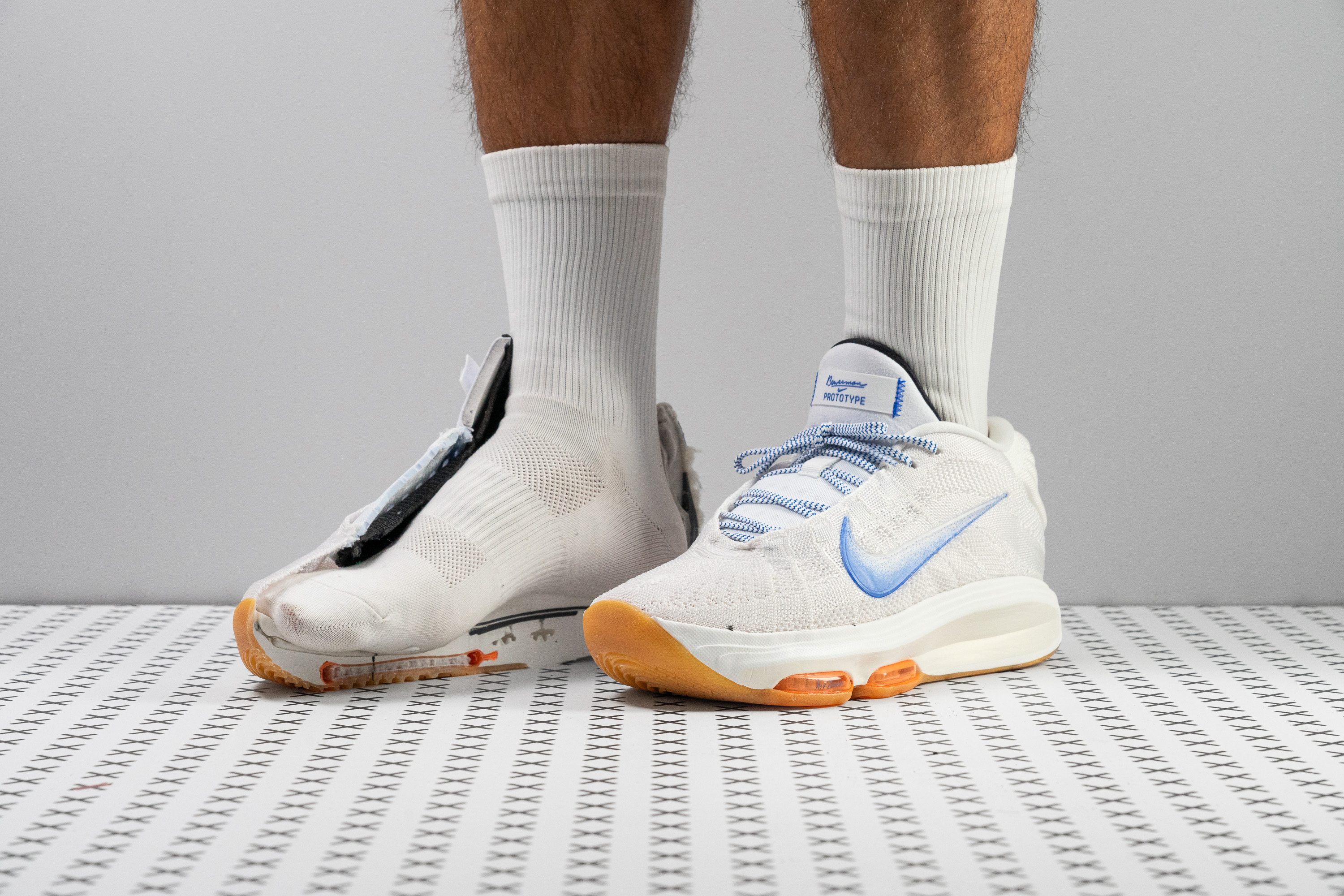

























































What makes it the best?
Pros
- Unmatched explosiveness with Zoom Air
- Unbelievable impact protection
- Great heel counter support
- Lightweight design
- Incredibly breathable
- Good traction
- Good upper durability
- Generously padded interiors
- Pretty comfortable
Cons
- No ground feel
- Might feel unsafe for light players
- Expensive
Best basketball shoes with high shock absorption and traction












































What makes it the best?
Pros
- Excellent shock absorption
- Propulsive energy return in the forefoot
- Superb outsole traction
- Solid ankle support and lateral stability
- Secure lockdown and containment
- Comfortable step-in feel
- Good breathability for warm temperatures
- Decent forefoot flexibility
- Promising durability (okay for outdoor courts)
Cons
- Heavier than average
- Not for wide feet
- No major updates from KD 17
Best all-rounder basketball shoes with high shock absorption











































What makes it the best?
Pros
- Wonderful containment and lock-in feel
- Bouncy and dynamic ride
- Excellent impact protection in the heel
- Really durable overall
- Quite breathable
- A solid performer
- Solid traction
- Pretty comfortable
Cons
- Minimal forefoot cushioning
- On the heavier side
- Picks up dust
- Snug fit
Best basketball shoes with high shock absorption for narrow feet
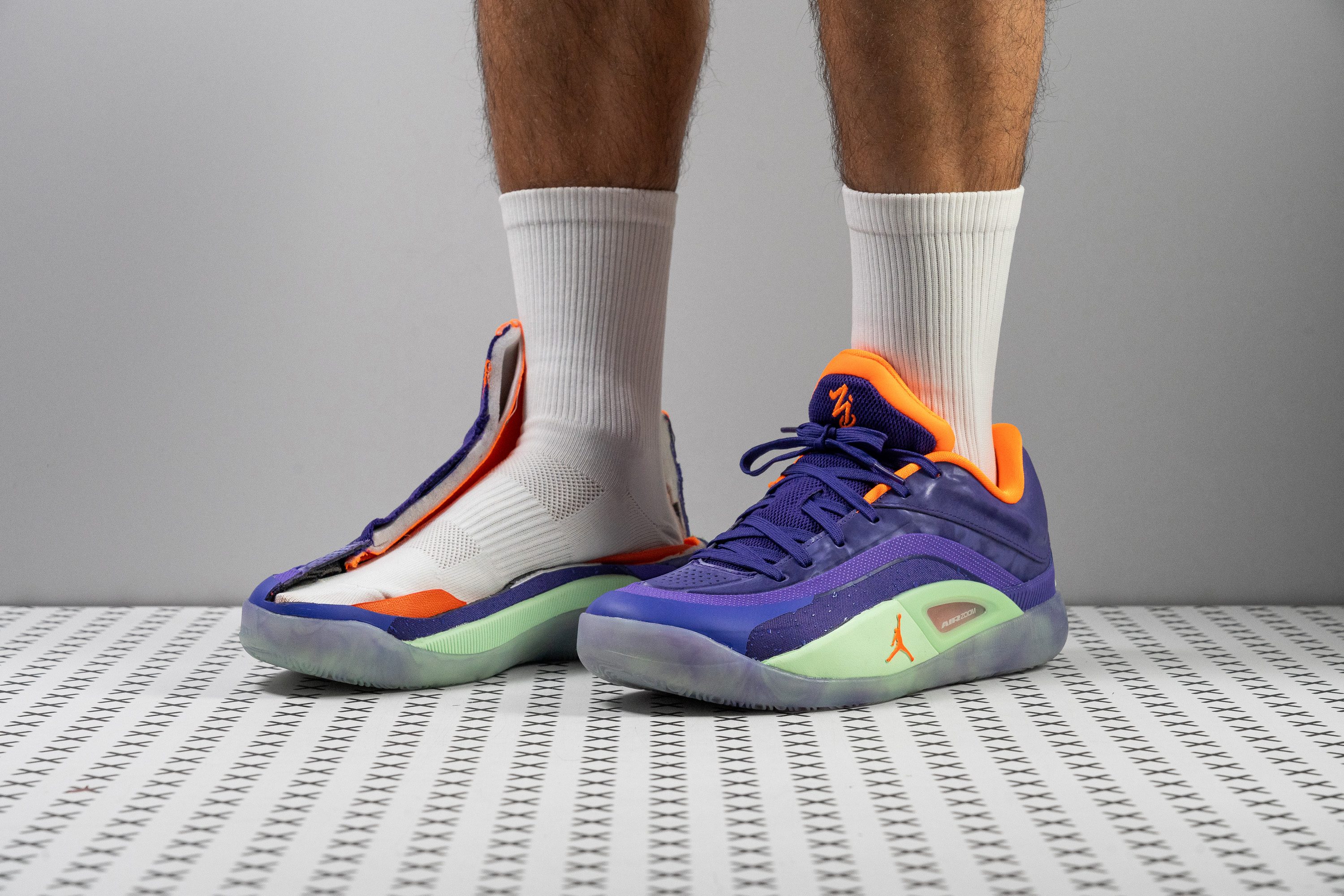














































What makes it the best?
Pros
- Above-average shock absorption
- Propulsive ride with full-length Air Zoom
- Cushioning doesn't mute court feel
- Balanced outsole traction
- Feels agile and maneuverable
- Good lateral support
- Fantastic upper and outsole durability
Cons
- Fit is still snug
- Got heavier than average
- Lacks breathability
Best budget basketball shoes with high shock absorption
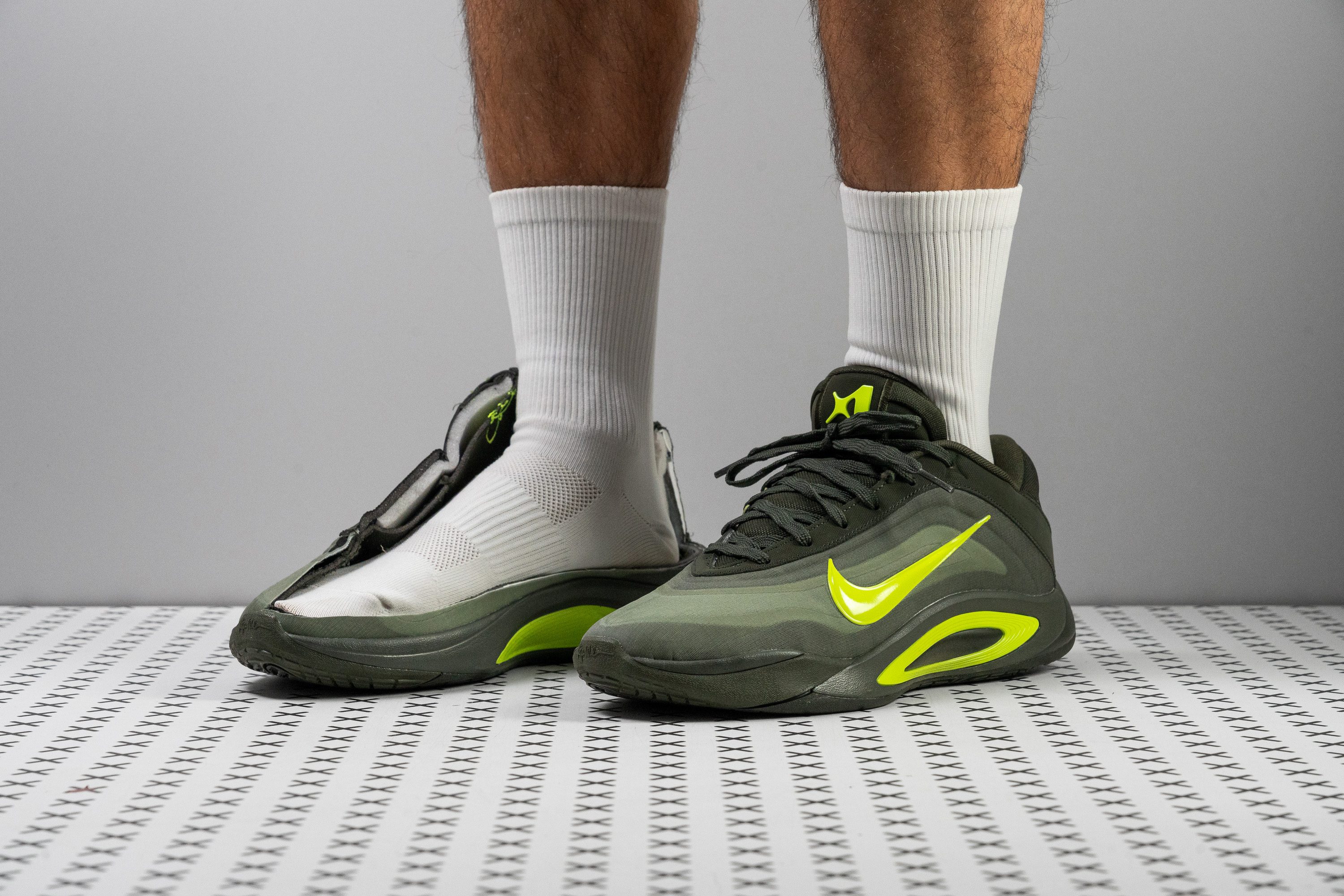













































What makes it the best?
Pros
- Excellent shock absorption heel to toe
- Impressive energy return from Cushlon alone
- Comfortable and padded in-shoe experience
- Strong multi-directional traction
- Impressively light for its package
- Superb stability and ankle support
- Fantastic value for money
Cons
- Not breathable at all
- Cheap-feeling materials lack durability
- Low and tapered toebox
What is shock absorption in basketball shoes? Its difference from energy return
Whenever you jump, sprint, make a hard stop, or a directional burst, your body exerts an impact force on the court through your shoes. Some of that force is attenuated by the shoe’s cushioning (shock absorption), and some of it rebounds back (energy return).
The higher the shoe’s shock absorption, the less stress goes to your feet, joints, bones, and body in general. This, in turn, means safer landings and less muscle fatigue by the end of the game.
Testing the shock absorption and energy return of a basketball shoe in our lab.
But high shock absorption doesn’t necessarily mean high energy return. You can have a soft midsole that keeps you comfortable but feels dull and mushy without offering any bounce or springback. Or it can be the opposite setup, where a shoe with low shock absorption feels quite responsive and dynamic.
Luckily, it doesn’t have to be either one way or the other, as there are quite a few basketball shoes with a perfect balance of both.
You can find out which basketball shoes have the highest energy return and which ones might work best for your playing style in our guide.
Pros: The benefits of high shock absorption in basketball shoes
The value of proper shock absorption, or cushioning, in basketball shoes is hard to overestimate. Try playing a match barefoot once or twice (please don’t!), and you will feel it in your body.
So how exactly do well-cushioned hoop shoes help you? Here are the important benefits:
1. Joint protection from repeated impact: Just think of how many landings you perform from rebounds, blocks, jump shots, and maybe even dunks in a given game! Or how much stop-and-go stress your knee and ankle joints sustain from all the fast sprints and drives. Heel cushioning is also important for sprinting and driving, as most players tend to heel strike when running.
And if you have any prior joint injuries, discomfort, or if you are an older player, the importance of proper shock absorption multiplies.
Beginner players with less efficient landing mechanics (i.e., harder landings and stiffer knees) are also better off with more underfoot protection, as it allows them to focus on honing fundamental skills instead of dealing with foot pain and discomfort.
2. Muscle and tendon fatigue reduction: Aside from big jumps and runs, also consider the continuous impact your body experiences throughout the game. All those short sprints, jumping and landing in traffic, low hops to contest shots or recover position, etc., accumulate to take a toll on our muscles and tendons. This becomes particularly important for long games and practices when the player’s fatigued muscles lose their effectiveness in absorbing the shock.
3. Increased comfort: Centers, post players, heavier athletes, older recreational hoopers, and explosive forwards will surely appreciate the added cushioning that softens the blow underfoot.

Cons: Where high shock absorption backfires
Too much of a good thing, as they say. But how can you tell if a pair of hoop shoes has a bit too much cushioning for you?
1. Reduced court feel: Generous cushioning often goes hand in hand with thicker midsoles and softer foams, which can dull ground feedback, affecting the player’s court feel, proprioception, and speed.
Thus, quick-footed guards and lighter players in general might be better off with moderately cushioned basketball shoes that provide just enough impact protection without affecting agility.
2. Slower reaction: Pillowy cushioning sounds great, but if it results in a sinking experience that bogs you down, it’s not the right shoe for you. Overly plush midsoles with low energy return can feel sluggish, making the wearer clumsier and slower when agility is required for sharp lateral cuts or quick stops.
This is especially true if the extra shock absorption comes at the cost of added shoe ounces.
3. Less stability: High-cushion setups with towering stack heights can also compromise stability and balance during side-to-side movements, especially if they are not backed up with strong lateral ankle support.
Example of a max-cushioned, high-stack basketball shoe that lacks stability.
If you are in for a controlled underfoot experience with just enough impact protection, choose hoop shoes with moderate shock absorption and stack height.
And if you want a maximum court feel to stay quick on your feet, then shoes with lower shock absorption readings and more down-to-earth stack heights are your best set.
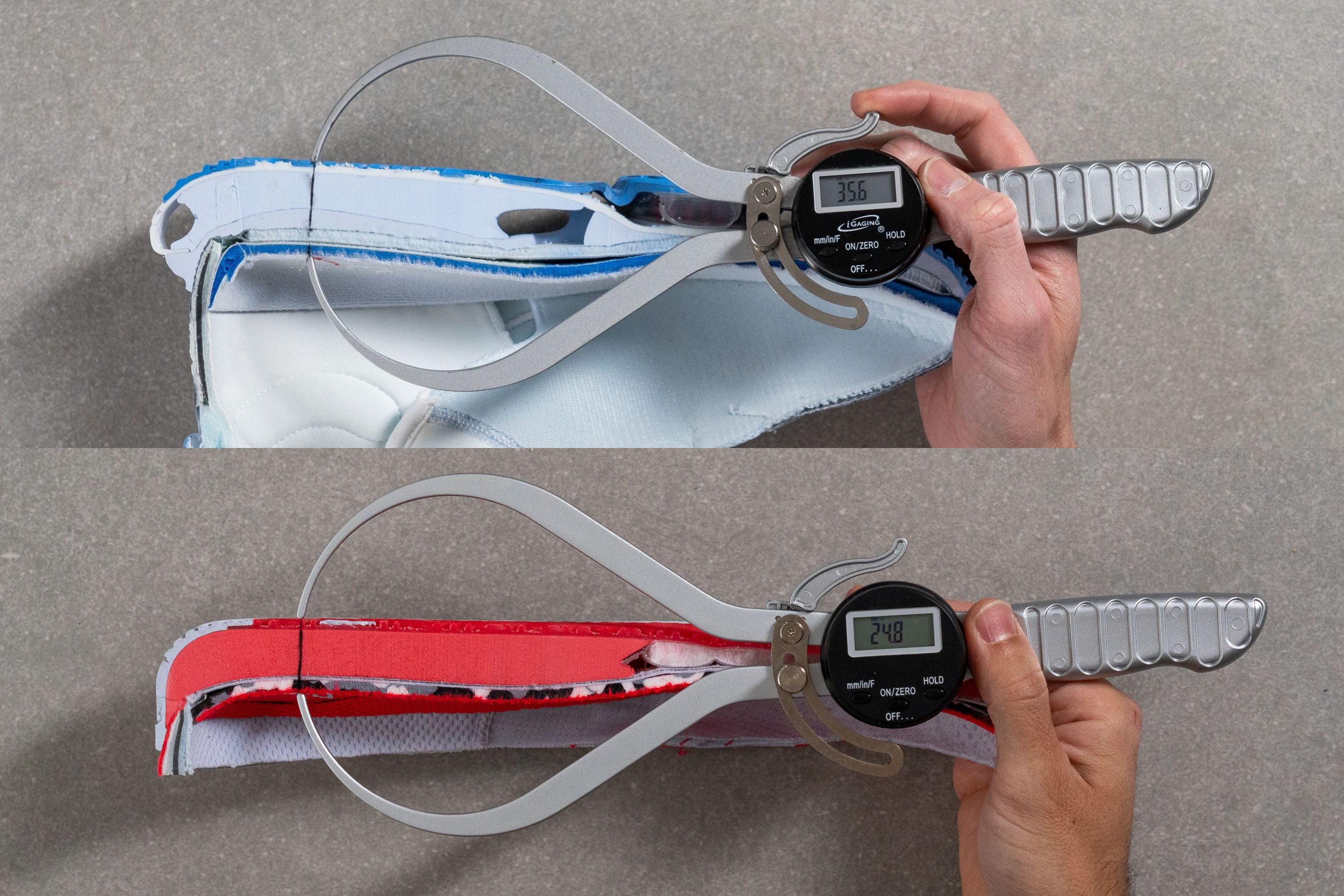
Cushioning softness: Are basketball shoes with high shock absorption softer?
If a shoe is described as ‘well-cushioned,’ we probably think of it as soft or even mushy. While that could be true for running shoes, that’s not always the case for basketball shoes.
Let’s examine two shoes that showed some of the highest shock absorption measurements in our lab: the Nike G.T. Jump 2 and the Nike G.T. Hustle 3.

Pressing a durometer against the primary midsole foams of both shoes, we got vastly different measurements! The Jump 2 came in at 16.0 HA (soft range), while the Hustle 3 returned 29.0 HA (balanced softness but closer to the firm range).
[https://cdn.runrepeat.com/storage/gallery/product_content/40096/nike-g-t-jump-2-cushioning.mp4]
Nike G.T. Jump 2 (16.0 HA)
Despite the significant difference in midsole softness, both shoes handle impact equally well.
[https://cdn.runrepeat.com/storage/gallery/product_content/40444/nike-g-t-hustle-3-outdoor-13.mp4]
Nike G.T. Hustle 3 (29.0 HA)
Looking at the midsole softness measurements of basketball shoes with a shock absorption of 105 SA or more (in the heel), our durometer recorded anywhere from 13 to 35 HA.
But it is also true that shoes with foams below 20 HA (soft range) are also more likely to make it into the high shock absorption category. That’s because premium blends like ZoomX have a significantly softer nature than their basic EVA counterparts.
It should also be noted that basketball shoe cushioning is further complicated by the presence of additional technologies like Air/Air Zoom units, plastic/TPU shanks of various shapes and configurations, firm carrier foams, etc. All of these features alter the perceived softness of basketball shoes, usually making them feel slightly firmer on the foot.
In fact, brands often resort to dual-density midsoles to pack both plush and firm foams to reap the benefits of both. The plusher foam (often placed on top or at the core of the sole) boosts comfort and impact protection, while the firmer foam adds stability and support (wrapping around and beneath the soft foam).

Bigger and heavier players are more likely to benefit from a combination of high shock absorption (at least 100 SA) and a firmer cushioning foam (at least 25 HA). That’s because the latter won’t bottom out as quickly, and their weight helps activate the cushioning properties of firm foam much better*.
*Firm foam doesn’t always mean dull. Sometimes it just needs some warming up to activate its properties. And it lasts longer.
Stack: Are high shock absorption shoes taller?
Essentially, there are two ways to increase the shoe’s shock-absorbing capacity:
- by improving the quality of cushioning
- by increasing the amount of cushioning
- or both
The average heel stack of basketball shoes hovers around 29.0 mm, and the average forefoot stack - around 22.0 mm.
| Shoe name | Shock absorption (heel) | Heel stack |
| Air Jordan XXXIX | 117.9 SA | 27.1 mm |
| New Balance FF BB v2 | 117.7 SA | 34.9 mm |
An example of two shoes with the same SA but different stack heights in the heel.
As the table below shows, hoop shoes with the best impact protection can have both towering heel stack heights of 35-36 mm, but also very moderate ones of 26-27 mm. The latter is best if you want excellent underfoot protection without losing connection with the court or stability.
How insoles affect shock absorption
Following the rules suggested by World Athletics, we include the shoe’s outsole, midsole, and insole in all our stack height measurements.
Unless you take them out or swap them for a custom orthotic, insoles are an inherent part of the shoe’s cushioning equation. And if you opt for an alternative insert, you should expect a slight change in the shoe’s shock absorption as well (for better or for worse).
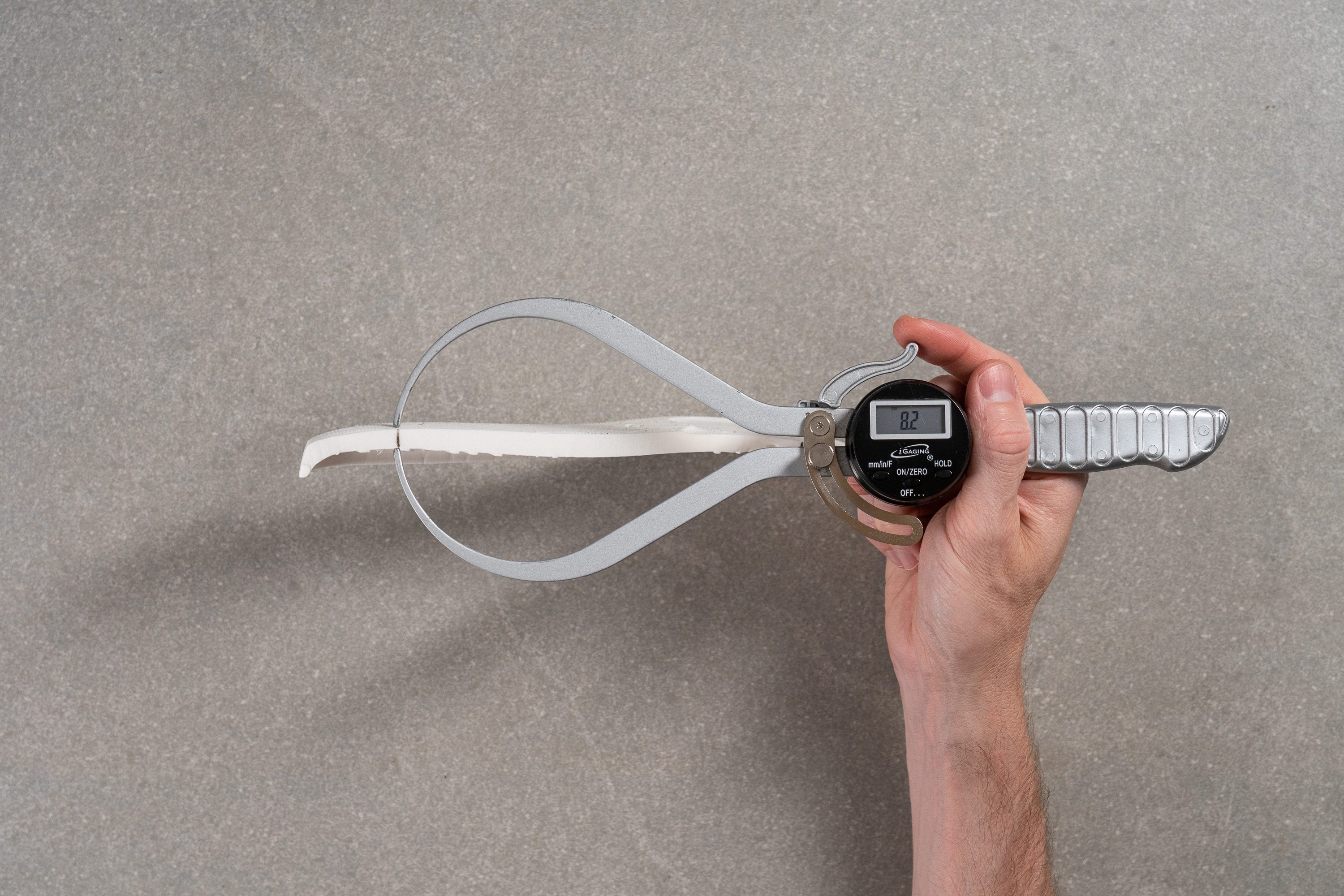
The average thickness of a basketball shoe insole comes in at 4.6 mm, with the best cushioned options coming closer to 5 or even 8 mm!
Weight: Are high-cushion basketball shoes heavier?
Just like stack height, the shoe’s weight can increase with additional foam and cushioning components.
So, yes, some of the basketball shoes in the high shock absorption range are heavier than average. But the good news is that there is no strong correlation between shock absorption and weight!
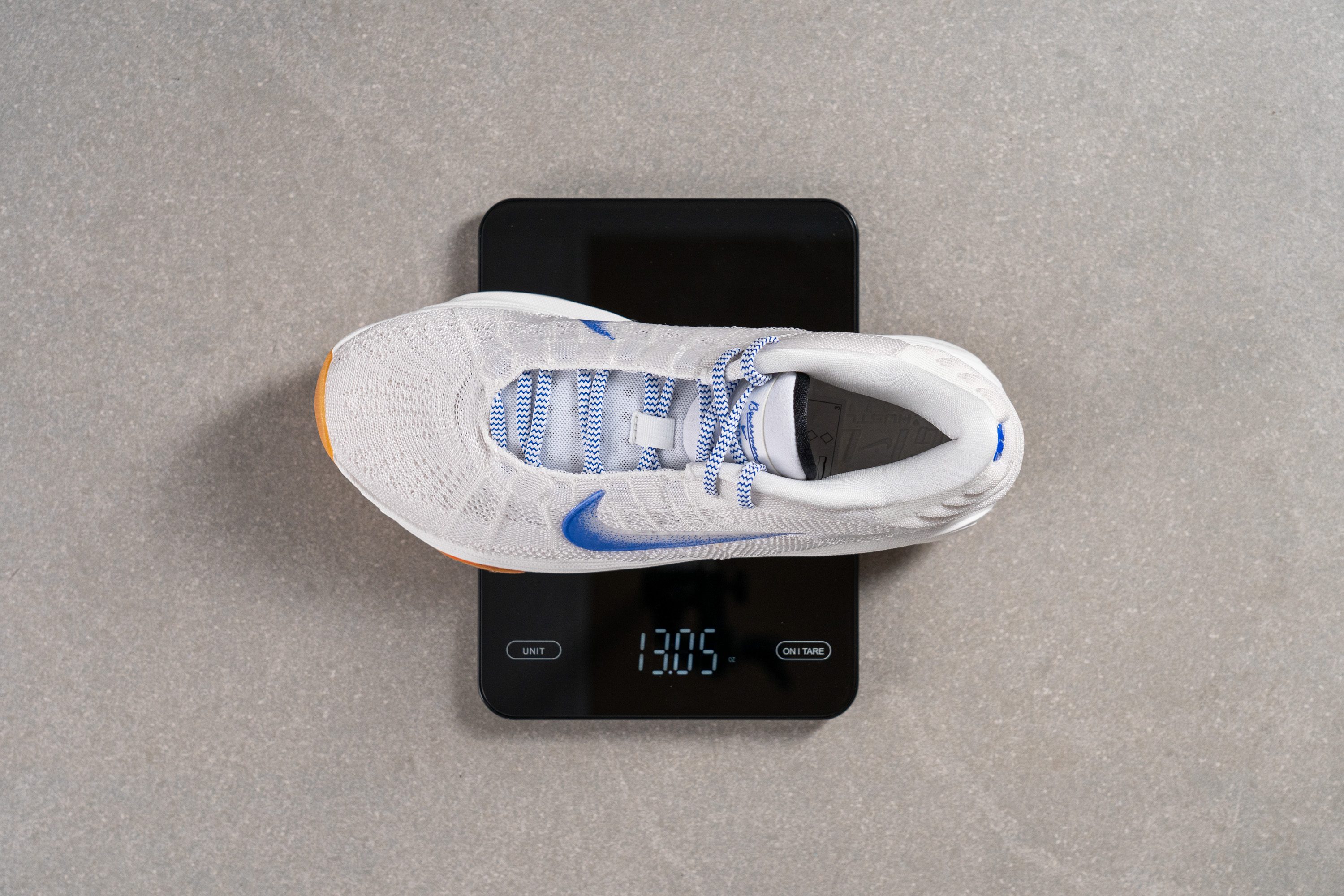
As cushioning technologies continue to evolve, we see how brands manage to provide better shock absorption without bulking up the shoe.
*For context, the average weight of basketball shoes hovers around 13.8 oz (392g).
Price: Do we pay more for better shock absorption?
Analyzing the retail prices (MSRP) of basketball shoes in general and shoes with high shock absorption in particular, we found that the latter typically cost more indeed:
- Average price of all basketball shoes: $146
- Average price of high-SA basketball shoes: $166
- But it’s important to note that a high price in itself is not a guarantee of better shock absorption by any means! Nor should you completely disregard the more affordable options.
At RunRepeat, we aim to cut through all the marketing and pricing bias to provide you with raw data on every shoe and help you find the best deal.
